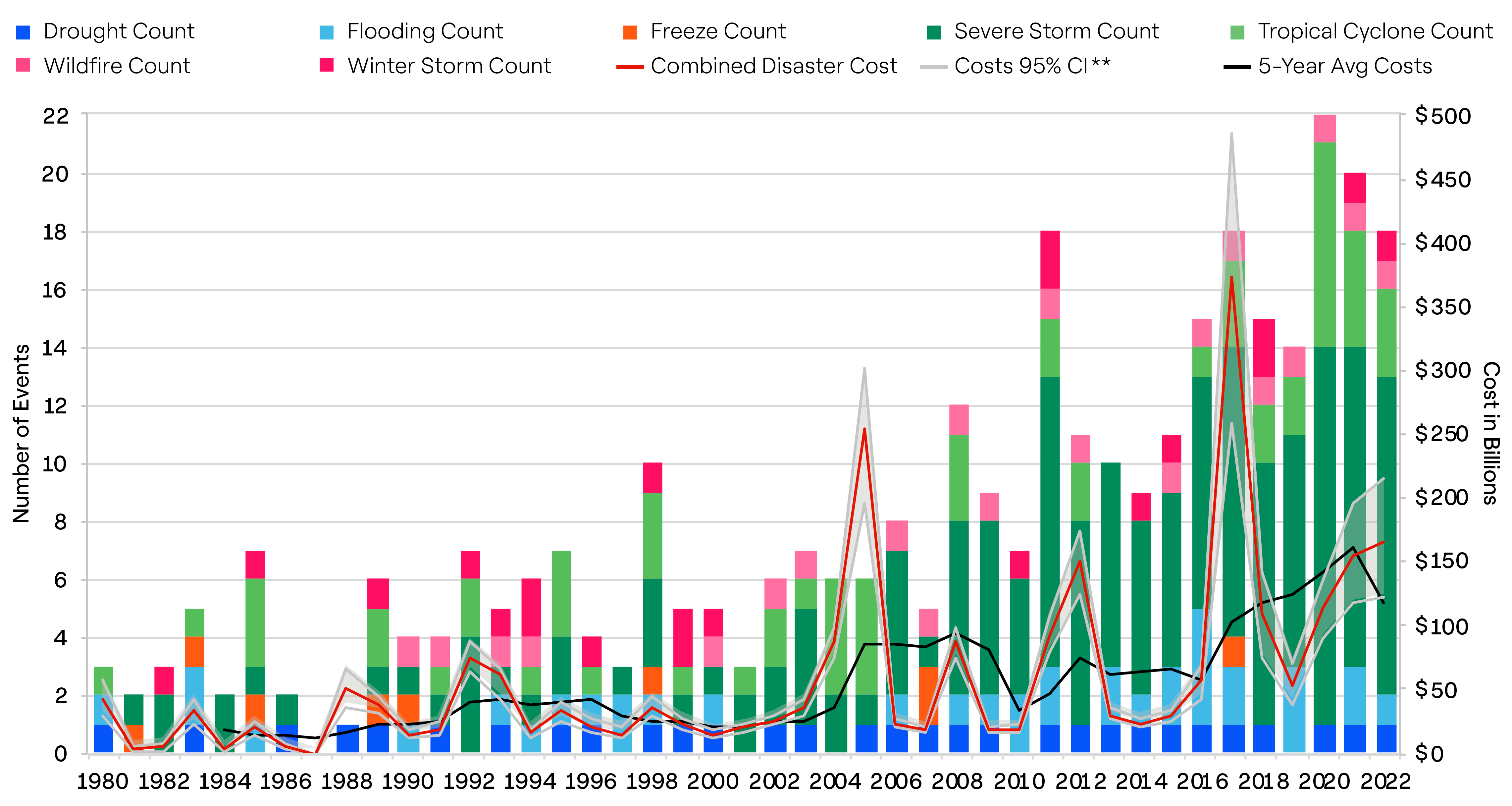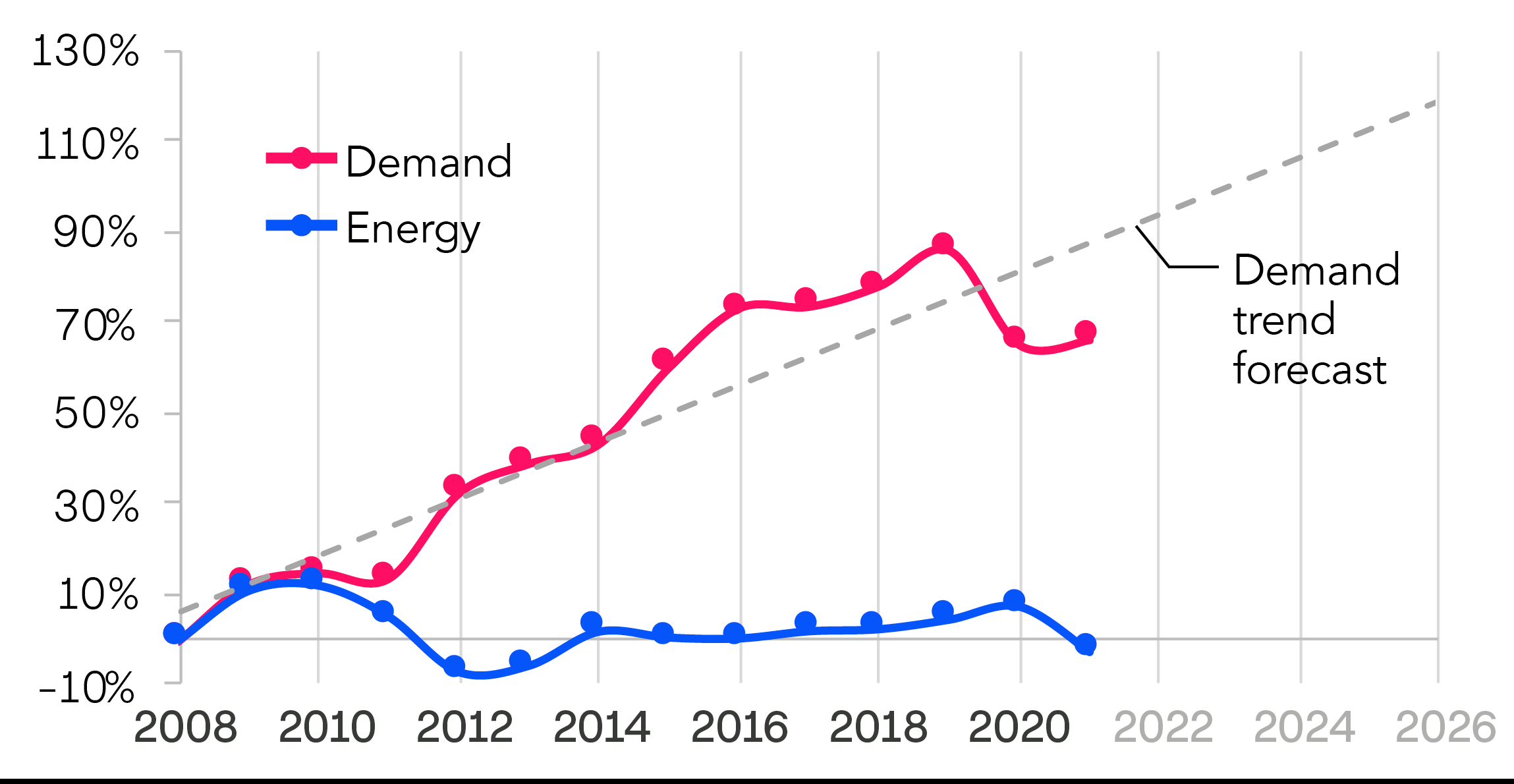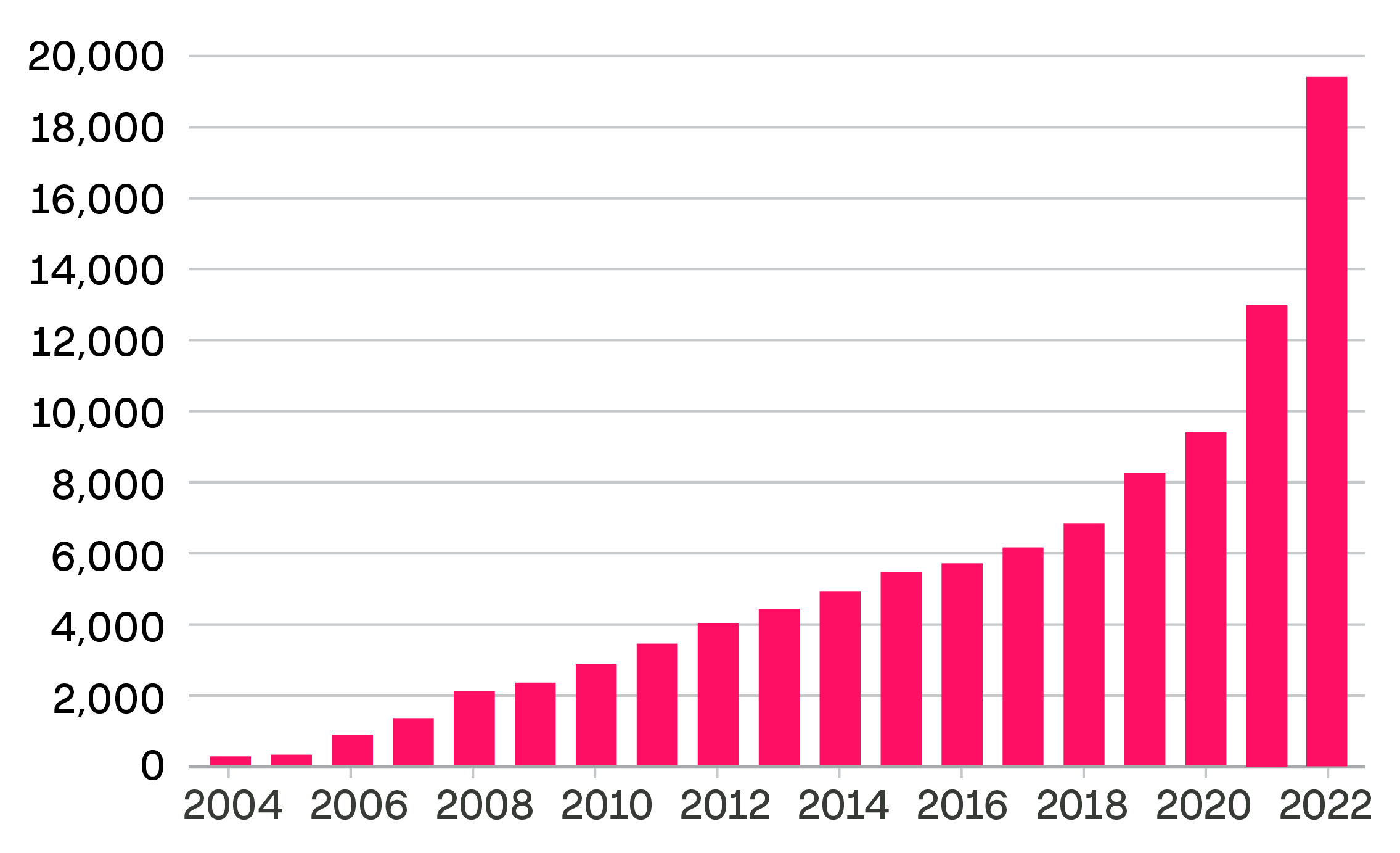Most often, “energy resilience” is defined as the ability to withstand local power outages and keep power flowing during grid disturbances. But there are a variety of ways in which organizations can and should be resilient in their energy usage, including where they source their power from, how much they pay for it, and how much of it is carbon-free.
To help you assess your organization’s energy resilience needs, we have expanded the traditional definition of energy resilience beyond “operational resilience” to also include considerations that help shield your organization from energy market volatility and regulatory risks. We identify these forms of energy resilience as “economic resilience” and “regulatory resilience,” respectively. You should examine all three considerations as you build out your strategy, as different organizations may benefit more from one energy resilience consideration than another, or all three may meet their needs.
To learn more about how to determine which form of energy resilience and corresponding energy resilience solutions will best align with your organization’s priorities, download our eBook “How to Evaluate Your Energy Resilience Needs.”
Operational resilience: how you can stay online through grid disruptions
How many times in the past year have you experienced a major power outage? According to Climate Central 2020, the number of major power outages has increased 67% in the 20 years after 2000, a trend that is expected to continue due to climate change-driven extreme weather. In 2022 alone, 18 extreme weather events each resulted in losses of $1 billion – including one drought, one flood, eleven severe storms, three tropical cyclones, one wildfire, and one winter storm.
United States billion-dollar disaster events 1980-2022 (CPI-adjusted*)

* To reflect changes in costs over time due to inflation, this graphic also shows events with less than $1 billion in damages at the time of the event, but after adjusting for inflation (Consumer Price Index), now exceed $1 billion in damages.
** The 95% confidence interval (CI) probability is a representation of the uncertainty associated with the disaster cost estimates.
Graphic courtesy https://www.ncei.noaa.gov/access/billions/time-series
Facilities that have operational resilience can continue energy-reliant processes despite a grid outage. This type of resilience is enabled by installing some sort of resilience hardware and controls (e.g., islanding relays, microgrid controllers, switchgear panel) that can switch your energy source from the central grid to your on-site generation sources. Within this setup, there are a variety of different energy solutions that can help you secure operational resilience, offering a range of durations to meet the needs of differently-sized energy loads.
To select the operational resilience solution that best fits your needs and budget, you need to quantify your avoided costs of an outage – the losses you would have incurred without a resilience solution. To do this, you need to understand both the frequency and duration of potential outages – and the costs from every hour the facility is down. Beyond the obvious costs of lost revenue, there are also the harder-to-quantify costs like unproductive labor, scrap, and more. Here are some examples of potential impacts:
- If a cold storage facility loses power and cannot power refrigeration equipment, it could result in a failure to meet quality standards – plus wasted product, lost revenue, and even a tarnished brand reputation.
- If a manufacturing facility loses power and cannot keep operations running, it results in lost revenue since goods are not being delivered to plan.
- If a higher education institution loses power, they need to pay for alternative housing and could face decreased revenues from dining options and housing fees. Many institutions also invest heavily in research, and an outage could destroy years of work.
- If a wastewater plant loses power and cannot treat water, no water is being treated to remove pollutants, and the plant would fail to meet regulatory compliance.
- If a water plant doesn’t have power for pumps, the plant cannot keep wells filled to provide water to the community they serve.
- If emergency services like fire stations or shelters lose power, equipment could be compromised and result in safety issues for communities.
The size and duration of the energy resilience solution ultimately determine the overall cost of the solution. To optimally size your solution, you need to consider whether or not you need to back up the entirety of your normal load during power outages. If not, you can size the solution to your critical load – that is, the load needed to support systems that are absolutely required to continue operations during an outage. Determining your load requirements is essential to ensure non-negotiable systems are prioritized and energy isn’t wasted on systems that don’t need to run continuously during an outage.
Consider some typical examples of critical loads that will be supplied during outages:
- Food and beverage companies have temperature controls to prevent food waste.
- Local governments need to maintain emergency services to their constituents.
- Water supply organizations need to ensure pumps continue to run.
- Manufacturers need to wind down production in an orderly manner to prevent scrap.
- Chemical manufacturers need to safely wind down production to prevent safety issues.
Once the site’s critical load is determined, there are other considerations you need to make: how resilience aligns with the operational budget, what technology to implement, and compliance with any organizational sustainability targets.
Economic resilience: how you can keep energy prices stable amid volatility
Beyond power continuity, you should make sure your energy strategy is resilient to cost uncertainty and volatility. Some areas of the country, like California, have seen significant increases in tariff rates for large energy users over the past decade. Our below analysis of PG&E’s E-20/B-20 tariff rates since 2008 shows that while energy-related components of the bill (shown in blue) stayed relatively constant between 2008 and 2021, demand charges (pink) increased 66% after adjusting for inflation. How resilient is your organization to future energy cost increases?
Sample California territory real rate % increase

Economic resilience can be an important part of energy strategy as rates rise in areas across the country. Above, note how California demand charges have grown quickly, drastically outpacing its energy rates, and rising much faster than inflation.
Reducing overhead costs is critical for operational excellence, as the price that you pay for energy directly impacts the services and products you provide. For example:
- For manufacturers, any rise in operational costs like energy either compresses margins or raises the cost of their products to consumers, which in turn could result in consumers looking to other brands. Consumer Energy Alliance found that C&I companies were expected to pay $41.4 billion more for business-related energy costs in 2022.
- Local governments are constantly under pressure from their constituents to demonstrate value for their taxpayer dollars – and more money spent on overhead costs like energy diverts funding from serving their communities.
- For higher education institutions, high energy costs might redirect funding from valuable student programs, course offerings, teacher salaries, and more. These typically are features that help them attract and retain students and talent.
One way to mitigate against energy cost volatility and uncertainty is to enter into a long-term financial contract (e.g., through a power purchase agreement) to cover a large portion of your future energy consumption with renewable and affordable energy at a contracted price. This can be done for both on-site and off-site energy solutions.
Regulatory resilience: how you can lower emissions to meet stakeholder demands
The regulatory landscape is changing quickly. Regulators and legislators are ramping up sustainability requirements, investors and stakeholders are demanding more action, and reporting standards are evolving. For instance, in 2022, the Securities and Exchange Commission (SEC) proposed new environmental, social, and governance (ESG) disclosure requirements that would require public organizations to enhance and standardize climate-related disclosures.
Number of corporate climate disclosures

Graphic via “Company climate disclosures jump in 2023 as board pressure builds” and www.cdp.net/en/articles/media/nearly-20-000-organizations-disclose-environmental-data-in-record-year-as-world-prepares-for-mandatory-disclosure
Stakeholder demands for sustainability have impacts across a wide variety of industries. For example:
- For manufacturers, there is greater expectation among customers, investors, and employees that they work toward operations powered by clean energy. And more and more, consumers are choosing to purchase from sustainable brands.
- For colleges and universities, there is greater expectation among students and staff that they increase their renewable energy use. Sustainability is even impacting enrollment, as many students factor sustainability into their decision-making process.
- For local governments, there is greater expectation among constituents and regulatory bodies that they work toward a cleaner energy footprint, and many regions are exploring clean energy mandates.
For many organizations, the simplest way to be ready for these changes is to start preparing now. Incorporating technologies like solar and storage that boost sustainability and reduce carbon emissions can make you resilient to whatever regulatory changes may come.
Finding the right energy resilience solution
Because organizations have significantly different priorities, it’s important to evaluate your needs and align them to the best energy resilience solutions for you. But the decision can be a complicated one, because there are a wide variety of factors to consider – and a wide variety of energy resilience solutions that can be combined in different ways to meet your specific needs.
In our eBook “How to Evaluate Your Energy Resilience Needs,” we have created a simple decision tree to help you take the first step in understanding the best solution for your organization. But to truly understand your options, it’s best to have a deeper discussion with an experienced energy partner. After reading our eBook, contact Enel North America to learn more about embedding energy resilience into your energy strategy.


